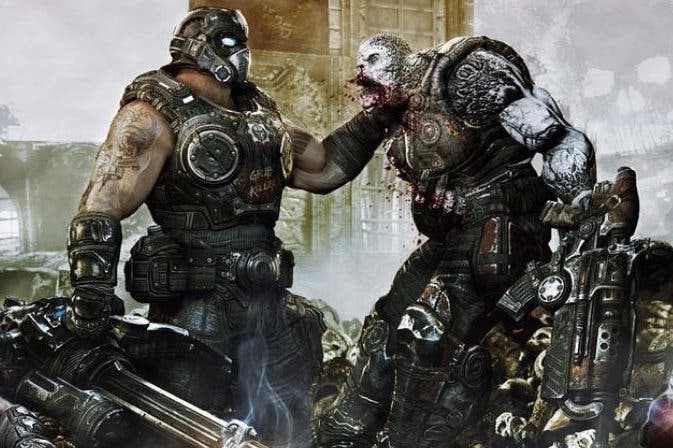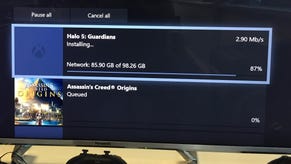Digital Foundry: Hands-on with Gears of War 4's multiplayer beta
Xbox One targets 1080p60, but how's it shaping up so far?
The Xbox One multiplayer beta for Gears of War 4 rolls out this week, offering a playable sampler of a major Microsoft title not due for release for another six months. We were given the opportunity to jump in early over the weekend, and we were eager to see what new studio The Coalition has achieved so far. The ambition here is certainly lofty: while single-player campaign is confirmed as a 30fps affair, the studio is aiming for 1080p60 with its multiplayer mode - with Unreal Engine 4 providing the technological underpinnings.
Gears of War and Unreal Engine have been a ubiquitous pairing since the franchise launched on Xbox 360 in November 2006, with the success of that title leading to the Epic middleware powering hundreds of games in the last-gen era. Indeed, even now, ten years after its debut, it continues to power many hits like Batman Arkham Knight and Rocket League.
However, Unreal Engine 4 is a different story: as companies transitioned over to the new consoles, changing business strategies, competing middleware and new in-house technologies have limited its appearance on new consoles. As a result, aside from a handful of indie titles and the occasional heavy hitter like Street Fighter 5 or the upcoming Paragon, we haven't really seen any AAA shooters designed using Epic's technology. That is, until Gears of War 4.
The Coalition's decision to target 60 frames per second for multiplayer entails trading some visual fidelity for a doubling in frame-rate - an exercise it has already experimented with in Gears of War: Ultimate Edition. It's a split we've seen become increasingly common this generation with single-player portions of games focusing on the cinematic experience while multiplayer is designed around faster controller response and smoother performance, but as things stand, comparing what we're playing here to the existing Gears 4 campaign footage almost looks like two different interpretations of the franchise. It'll be interesting to see the extent to which the whole game gels once development is finally complete.
Perhaps inevitably for a beta with so much development time remaining, there's definitely the sense that this is work-in-progress code that's somewhat rough around the edges, but there's certainly a wealth of technical improvements to appreciate. To start with, the game makes use of physically-based rendering to deliver more realistic materials, as we saw in Gears of War Ultimate Edition. This is coupled with sharp textures, plenty of high quality screen-space reflections, clean shadows, and good overall image quality. We also appreciate the copious amount of environmental effects present in each environment - from blowing tarps to GPU-accelerated rain droplets, the three maps in the beta certainly manage to feel alive.
That said, there are certainly a number of issues that we're expecting to see improved by launch - texture pop-in is an issue, animation is often unrefined, maps appear blocky and many post-processing effects are almost completely absent. However, the main issue is lighting - or the curious lack thereof. There's a flatness to the look, suggesting that only a preliminary round of lighting has been implemented. Ambient occlusion appears to be absent, while Unreal Engine's pre-computed lighting system - Lightmass - isn't fully exploited. The scenes in general appear unfinished, which obviously they are. Microsoft tells us that this is an actual beta designed for testing purposes and to gauge feedback, so we're not unduly worried at the moment.
While we certainly expect improvements, we can also forgive cutbacks if a rock-solid 60fps is achieved. After all, Halo 5 made plenty of smart cutbacks and managed to deliver a near flawless 60fps experience in the process. By and large, even at the beta stage, Gears of War 4 multiplayer comes fairly close to reaching its 1080p60 target - but it's not quite there yet. To combat dips in performance, Gears 4 uses an adaptive v-sync solution similar to many other Xbox One titles - this means you'll see tear lines along the top portion of the screens provided the framebuffer flips early enough, otherwise the frame is simply skipped. It prevents tearing from becoming overly noticeable, reduces latency and keeps input response crisper than a full triple-buffer setup.
So just how close are we to the intended performance target six months out from launch? Well, across the run of play, we're basically looking at a general level of performance of around 55fps on average, with mild screen-tear. In addition, we observed plenty of skips and stutters that interrupted fluidity at various points - something mentioned within the body of text shown when you launch the game. In beta form, Gears 4 isn't that smooth yet, but the 60fps lock doesn't look completely out of reach. Thankfully, the title doesn't actually launch until this coming October and The Coalition still has plenty of time to smooth things over.
Taken as a whole, the developer's ambitious targets for Gears of War 4 are laudable. The visual quality isn't quite where we'd like yet, but this is an Unreal Engine 4 shooter targeting 1080p60 on current-gen console hardware - and there aren't too many of those. The Gears of War titles on Xbox 360 always aimed to deliver the most cutting-edge visuals in console gaming - go back to Gears of War 3 even now and it's remarkable how well it holds up - but perhaps some priorities have shifted with The Coalition now taking point on development. Compromises will be required to lock at 1080p60, but we do expect to see some big improvements. With that in mind, we'll be interested to see how the final game compares to this early beta offering. We'll certainly be keeping an eye on Gears of War 4 as development continues.











